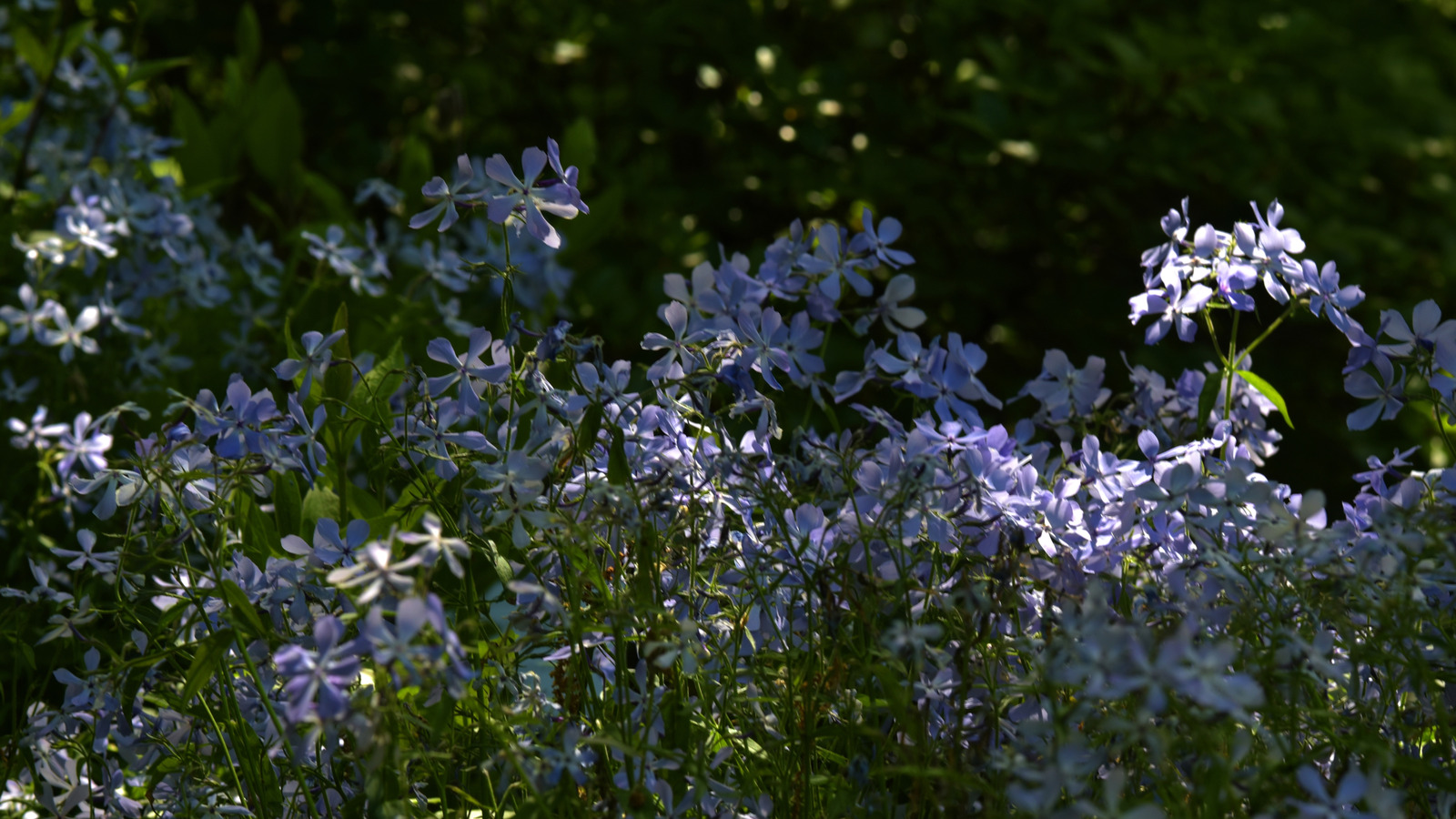
When you think of phlox, you might picture the 5-foot-tall garden phlox (Phlox paniculata) that graces many a cottage garden. But the genus phlox contains a wide variety of species — some that need full sun, some that grow in the shade, upright beauties blooming in late summer, creepers that open up in mid-spring. Woodland phlox (Phlox divaricata) manages to put out vibrant and fragrant flowers in partial to full shade, while you should plant its close cousin creeping phlox (Phlox subulata) in full sun. Like creeping phlox, woodland phlox will bloom from spring into the first weeks of summer.
Like all species of phlox, woodland phlox is native to North America and can be found growing wild from Quebec and Minnesota south to Texas and Florida. Also known as wild blue phlox and wild sweet William, among other names, woodland phlox grows from 6 to 12 inches high and is hardy in USDA planting zones 3 to 8. Numerous cultivars are available, from the diminutive “Blue Elf” to the prolific “Louisiana Purple.” Some cultivars, such as “Fuller’s White,” are more tolerant of sun. This versatile species produces flowers that vary from white and pink to lavender and violet-blue. Its leaves are semi-evergreen, so it acts as an excellent ground cover to keep out the weeds.
Tips for growing woodland phlox
Prepare your soil with your own DIY compost, then plant woodland phlox in light to full shade and rich, moist, deeply dug soil that drains well. Woodland phlox has shallow roots, which make it easy to divide or transplant, but it also makes it subject to frost heaves in places with cold winters, so it’s best to plant it in spring to allow it to establish roots before winter. Find a spot with some morning sun to help it produce more vibrant flowers rather than grow lanky stems.
Once planted, woodland phlox needs little maintenance. In spring, after the flowers have completed their bloom, you can divide the plants if they need more room or if you want to start growing them elsewhere. The plant self-sows, so if you want to keep it from spreading, deadhead the flowers after they fade, but before they start producing seed. Just snip off the old flowering stems down to the foliage. If you want them to self-sow, you can still cut the stems back for aesthetic reasons when they turn brown in midsummer.
If you live in a hot and humid area, woodland phlox (like most of its phlox relatives) can be subject to powdery mildew. If so, cut the affected plants down to produce new growth. Be sure to use sharp garden shears that you have cleaned and disinfected to prevent the transfer of this easily spreadable disease. Place diseased parts in your garbage bin, not in your compost pile. Otherwise, there is no need to prune its semi-evergreen foliage for winter.






